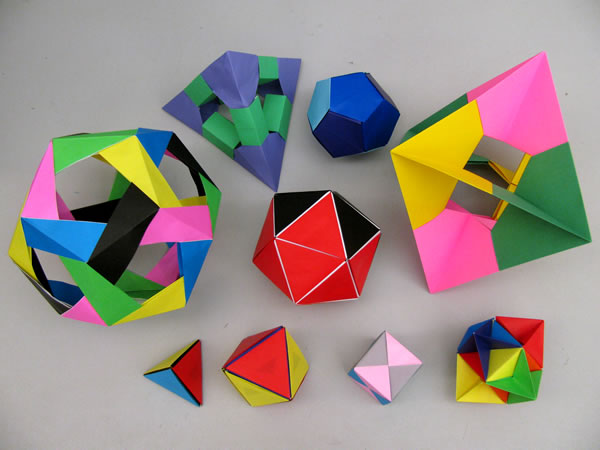"What is a polyhedron?" you ask.
Let's first review what a polygon is first! A polygon is a
2-dimensional structure
with some number of connected straight lines (edges) and corners
(vertices). Some polygons we call "regular polygons." We call
them regular polygons when all of their edges have the same length and the
angle of all of their vertices are also all equal to one another.
A
polyhedron is a
3-dimensional solid with polygonal faces. The names
of these shapes come from the Greek & Latin words. For example,
"tetra" means four, "hexa" is six, "octa" is eight, "dodeca" is twelve,
and "icosa" is twenty. Every polyhedron has vertices, edges, and
faces enclosing a space:

A regular polyhedron is a polyhedron whose faces
are all identical
regular polygons and their vertices are all formed by the
same number of faces.
For example, in our hexahedra (cube), we always have 3 faces forming a
vertex. (See diagram above.) If you look carefully, you will also
see that the hexahedra has 6 identical faces that are all squares.
We of course, know that a square is a good example of a regular polygon. In the
figures below, see if you can figure out what type of identical regular
polygon each of the following polyhedra has:
 |
 |
 |
 |
 |
Tetrahedron
4 Congruent Faces |
Hexahedron
6 Congruent Faces |
Octahedron
8 Congruent Faces |
Dodecahedron
12 Congruent Faces |
Icosahedron
20 Congruent Faces |
Shown below, are photos of some of my
origami.
















